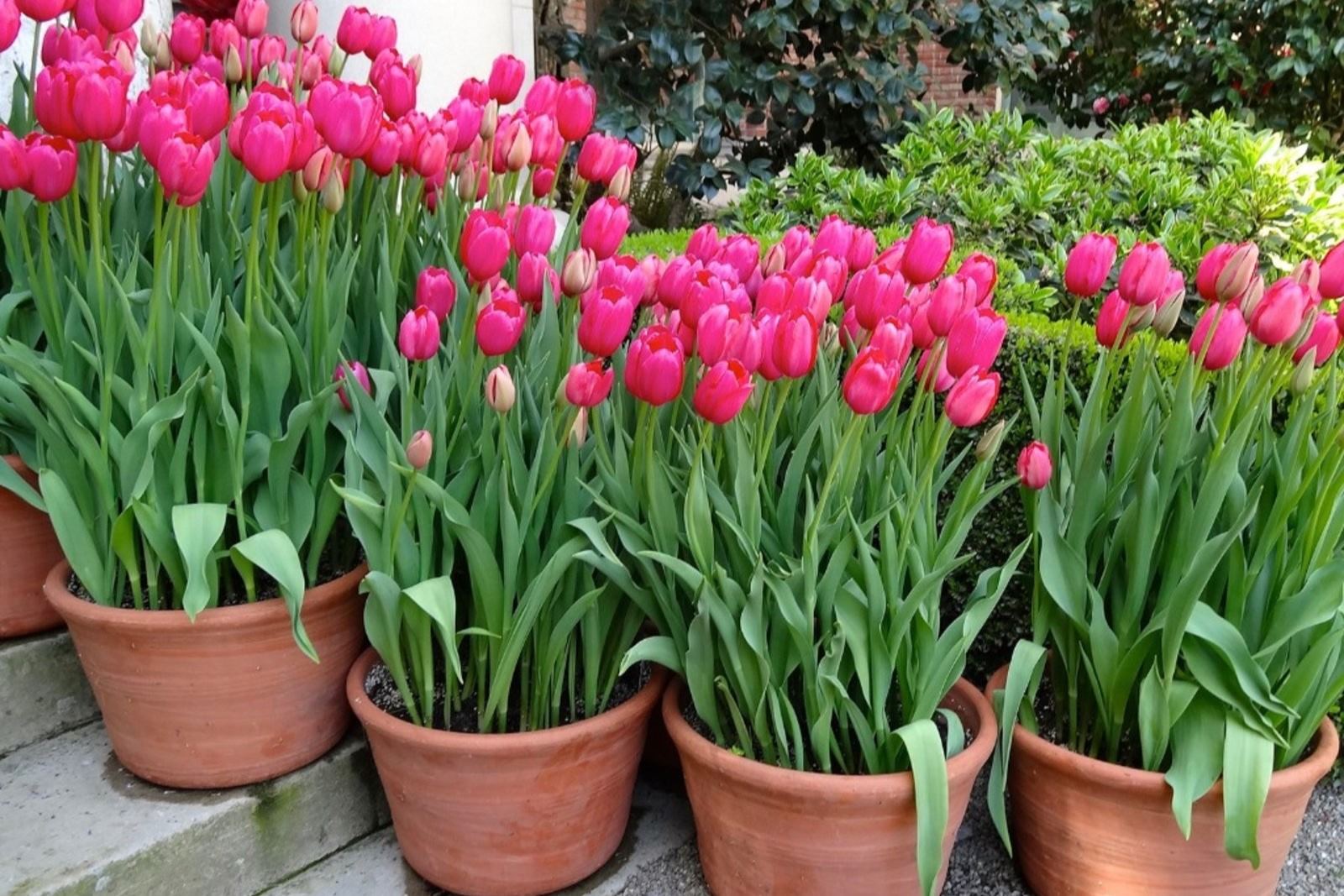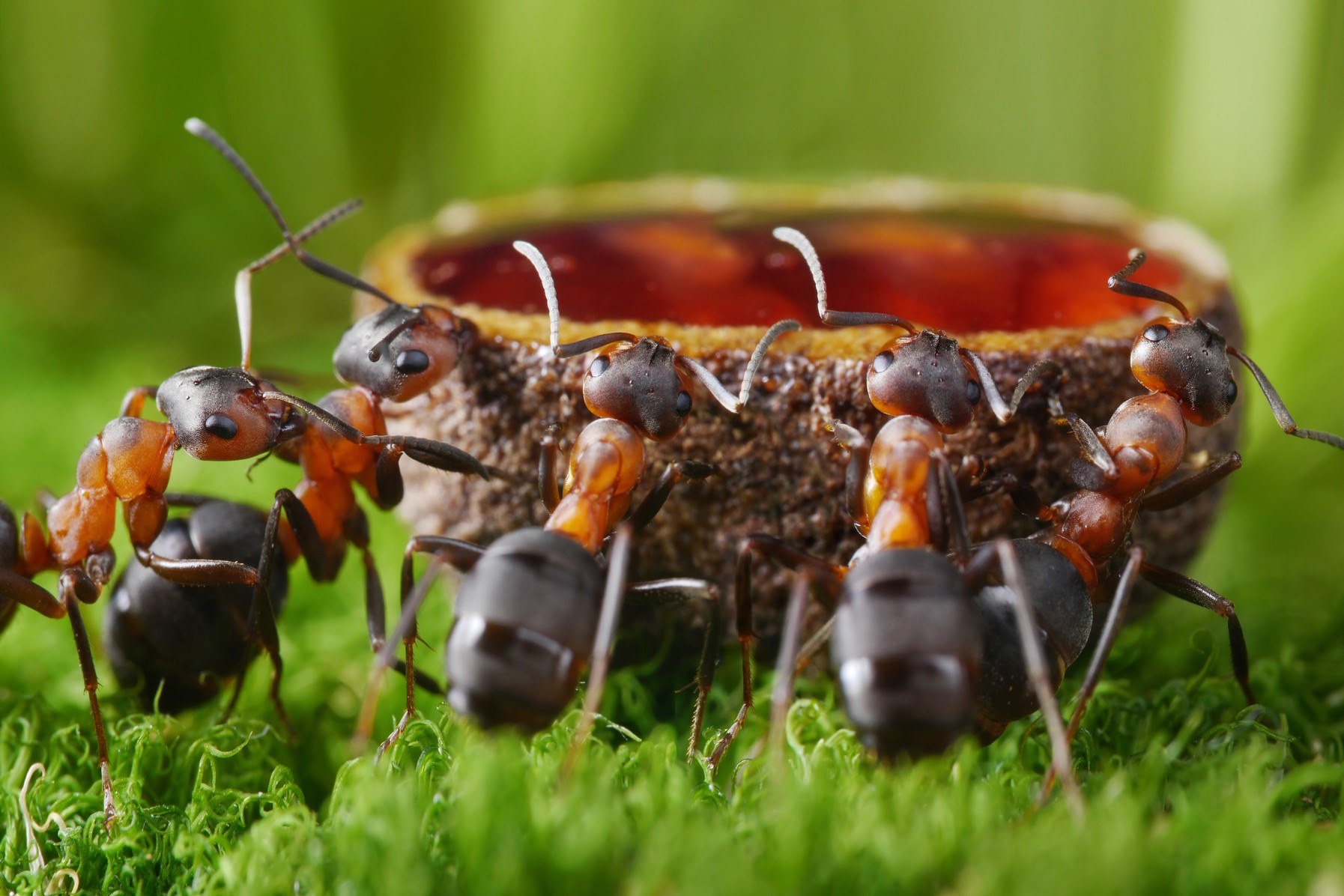Home>Home and Garden>The Ultimate Guide To Keeping Tulips Alive In A Pot


Home and Garden
The Ultimate Guide To Keeping Tulips Alive In A Pot
Published: January 17, 2024
Learn the essential tips for keeping tulips thriving in pots with our comprehensive home and garden guide. Discover expert advice for successful tulip care.
(Many of the links in this article redirect to a specific reviewed product. Your purchase of these products through affiliate links helps to generate commission for Noodls.com, at no extra cost. Learn more)
Table of Contents
Introduction
Tulips are beloved for their vibrant colors and elegant, cup-shaped blooms, making them a popular choice for adding a touch of beauty to any home or garden. While many people associate tulips with traditional garden beds, they can also thrive when grown in pots, allowing you to enjoy their stunning display in a more confined space. Whether you're a seasoned gardener or a novice plant enthusiast, cultivating tulips in a pot can be a rewarding and enjoyable experience.
In this comprehensive guide, we will delve into the art of nurturing tulips in a pot, providing you with valuable insights and practical tips to ensure the success of your floral endeavor. From selecting the right pot and soil to mastering the art of watering, fertilizing, and providing adequate light, we will cover every aspect of caring for potted tulips. Additionally, we will explore strategies for protecting your tulips from pests and diseases, as well as the vital steps for overwintering them, ensuring their continued health and vitality.
By the end of this guide, you will have the knowledge and confidence to embark on your own tulip-growing journey, creating a stunning display of nature's beauty right in your own home. So, let's embark on this horticultural adventure together, as we unravel the secrets to keeping tulips alive and thriving in a pot.
Choosing the Right Pot
Selecting the appropriate pot is a crucial first step in creating an optimal environment for potted tulips. When choosing a pot, consider the following factors to ensure the health and vitality of your tulips:
Size Matters
Opt for a pot that provides ample space for the tulip bulbs to develop and expand. A general rule of thumb is to select a container that is at least 12 inches in diameter and 12 inches deep. This size allows for proper root development and prevents overcrowding, which can hinder the growth of the tulips.
Drainage Is Key
Ensure that the pot has adequate drainage holes at the bottom to prevent waterlogging, which can lead to root rot and other moisture-related issues. Good drainage is essential for maintaining the well-being of the tulip bulbs, as it prevents water from accumulating and causing damage to the roots.
Material Matters
Choose a pot made from a durable material, such as terracotta or plastic. Terracotta pots are breathable and provide good air circulation to the roots, while plastic pots are lightweight and retain moisture well. Both options are suitable for growing tulips, so select the material that best suits your specific needs and preferences.
Consider Aesthetic Appeal
While functionality is paramount, don't overlook the aesthetic aspect of the pot. Opt for a container that complements the beauty of the tulips and enhances the overall visual appeal of your indoor or outdoor space. Selecting a pot that aligns with your personal style and the existing decor will elevate the visual impact of your potted tulips.
By carefully considering these factors when choosing the right pot for your tulips, you can create an ideal environment for their growth and ensure a visually stunning display that brings joy and beauty to your surroundings.
Selecting the Right Soil
The selection of the right soil is a pivotal aspect of successfully growing tulips in a pot. The ideal soil should provide a nurturing environment for the tulip bulbs, offering essential nutrients, proper drainage, and a stable medium for root development. When choosing the soil for your potted tulips, consider the following factors to ensure their health and vitality:
Nutrient-Rich Composition
Opt for a well-balanced, nutrient-rich potting mix that provides the essential elements for healthy tulip growth. Look for a high-quality potting soil that is specifically formulated for bulbs and flowering plants. These specialized mixes typically contain a blend of organic matter, such as compost and peat moss, along with perlite or vermiculite to enhance drainage and aeration. The presence of these organic components ensures that the soil is fertile and capable of sustaining the tulips throughout their growth cycle.
Excellent Drainage Properties
Good drainage is critical for preventing waterlogged soil, which can lead to root rot and other moisture-related issues. Choose a potting mix that promotes effective drainage, allowing excess water to flow freely through the soil and out of the drainage holes in the pot. This prevents the bulbs from sitting in waterlogged conditions, safeguarding them against potential damage and disease. Additionally, a well-draining soil structure facilitates oxygen circulation around the roots, promoting healthy growth and minimizing the risk of root-related problems.
Balanced Moisture Retention
While effective drainage is essential, the soil should also possess adequate moisture retention capabilities to ensure that the tulip bulbs receive consistent hydration. Look for a potting mix that strikes a balance between drainage and moisture retention, keeping the soil sufficiently moist without becoming waterlogged. This balance is crucial for sustaining the tulips' hydration needs and promoting robust growth throughout their lifecycle.
pH Balance
Consider the pH level of the potting soil, aiming for a slightly acidic to neutral range (pH 6.0-7.0) that is conducive to tulip cultivation. Most high-quality potting mixes are formulated within this pH range, providing an optimal environment for the bulbs to thrive. A balanced pH level ensures that the soil composition supports the absorption of essential nutrients by the tulips, contributing to their overall health and vigor.
By carefully selecting a potting mix that encompasses these essential qualities, you can establish an ideal growing medium for your potted tulips, setting the stage for their successful development and the emergence of vibrant, captivating blooms.
Planting Tulips
Planting tulips in a pot is a fulfilling endeavor that requires attention to detail and a thoughtful approach to ensure the optimal growth and blooming of these exquisite flowers. When it comes to planting tulips in a pot, several key considerations come into play, from the timing of planting to the proper technique for positioning the bulbs. By adhering to best practices and understanding the specific requirements of tulip bulbs, you can lay the groundwork for a spectacular display of color and elegance.
Timing is Crucial
The timing of planting tulip bulbs is a critical factor that directly impacts their growth and blooming cycle. It's essential to plant the bulbs at the right time to ensure that they receive the necessary period of cold dormancy before sprouting and flowering. For most regions, the ideal time to plant tulip bulbs in a pot is during the fall, roughly six to eight weeks before the first hard frost. This timing allows the bulbs to establish their root systems and undergo the required chilling period, setting the stage for robust growth and abundant blooms in the spring.
Positioning the Bulbs
When planting tulip bulbs in a pot, it's important to position them correctly to facilitate healthy development and optimal flowering. Begin by filling the pot with a layer of well-draining potting soil, ensuring that it covers the bottom to a depth that accommodates the length of the tulip bulbs. Place the bulbs in the soil with the pointed ends facing upward, ensuring that they are spaced apart to prevent overcrowding. The recommended spacing between bulbs is roughly 2-3 inches, allowing them ample room for root expansion and subsequent growth.
Soil Coverage and Watering
Once the bulbs are positioned in the pot, cover them with additional potting soil, ensuring that the tips of the bulbs remain slightly exposed. This protective layer of soil helps insulate the bulbs and provides a stable environment for root development. After covering the bulbs, water the pot thoroughly to settle the soil and initiate the early stages of growth. It's essential to maintain moderate soil moisture during the planting phase, as this encourages the bulbs to initiate root growth and prepares them for the dormancy period ahead.
Patience and Anticipation
After planting the tulip bulbs in the pot, exercise patience and anticipation as you await the emergence of the first tender shoots. Place the pot in a cool, dark location to simulate the natural conditions that prompt the bulbs to develop roots and prepare for their eventual display of vibrant blooms. Throughout this period, monitor the soil moisture levels, ensuring that it remains consistently moist but not waterlogged.
By adhering to these planting guidelines and providing the appropriate care, you can set the stage for a breathtaking showcase of tulip blooms, bringing a touch of natural splendor to your home or garden.
Watering and Fertilizing
Proper watering and fertilizing are essential components of maintaining the health and vitality of potted tulips, contributing significantly to their growth, flowering, and overall well-being. By understanding the specific watering and fertilizing requirements of tulips, you can ensure that they receive the necessary nutrients and hydration to thrive in a container environment.
Watering Guidelines
Consistent and appropriate watering is crucial for sustaining the moisture levels essential for the growth and development of potted tulips. When it comes to watering tulips, it's important to strike a balance between providing adequate hydration and preventing waterlogged conditions that can lead to root rot and other moisture-related issues.
Frequency: During the active growth phase, it's recommended to water the potted tulips regularly, ensuring that the soil remains consistently moist but not waterlogged. As a general guideline, aim to water the tulips when the top inch of the soil feels dry to the touch. This practice helps maintain optimal soil moisture levels, providing the bulbs with the hydration they require for robust growth and flowering.
Watering Technique: When watering potted tulips, aim to deliver water directly to the soil, avoiding wetting the foliage and flowers. This targeted approach helps prevent moisture-related diseases and minimizes the risk of fungal issues. Use a watering can or a gentle spray nozzle to apply water evenly across the soil surface, allowing it to penetrate the root zone without causing disturbance.
Drainage: After watering, ensure that excess water can freely drain from the pot, preventing water from accumulating at the bottom. Proper drainage is essential for maintaining the health of the tulip bulbs, as it prevents waterlogging and promotes aeration of the root system.
Fertilizing Practices
Fertilizing potted tulips is a key aspect of providing them with the essential nutrients necessary for robust growth and prolific flowering. While high-quality potting mixes contain initial nutrients, supplemental fertilization supports the long-term health and vitality of the tulips throughout their growth cycle.
Timing: Begin fertilizing the potted tulips when the first green shoots emerge, signaling the onset of active growth. Use a balanced, water-soluble fertilizer formulated for flowering bulbs, following the manufacturer's instructions for dilution and application frequency. Apply the fertilizer every two to three weeks during the growing season, ensuring that it is evenly distributed across the soil surface.
Application: When applying fertilizer, water the pot thoroughly beforehand to prepare the soil for the influx of nutrients. Dilute the fertilizer according to the recommended ratio and apply it to the moist soil, allowing the roots to absorb the nutrients effectively. Avoid direct contact between the fertilizer and the foliage or bulbs, as this can lead to potential damage.
Transition to Dormancy: As the tulips transition to the end of their blooming period and begin to enter dormancy, gradually reduce the frequency of fertilization. This adjustment aligns with the natural growth cycle of the tulips, allowing them to gradually taper off their nutrient requirements as they prepare for the dormant phase.
By adhering to these watering and fertilizing guidelines, you can provide the potted tulips with the optimal conditions for sustained growth, vibrant flowering, and long-term vitality. These practices contribute to the overall health and beauty of the tulips, ensuring that they continue to grace your home or garden with their captivating presence.
Providing the Right Light
Proper light exposure is a critical factor in ensuring the successful growth and blooming of potted tulips. When it comes to providing the right light for these exquisite flowers, understanding their specific requirements and optimizing their exposure to sunlight is essential for their overall health and flowering potential.
Natural Sunlight
Tulips thrive in bright, indirect sunlight, making it essential to position the potted tulips in a location that receives ample natural light. When selecting the ideal spot for your tulips, aim for a place where they can benefit from at least 6-8 hours of sunlight per day. South-facing or west-facing windows are typically favorable for providing the right balance of sunlight, allowing the tulips to receive the necessary light exposure without being subjected to intense, direct sunlight for extended periods.
Indoor Considerations
For indoor environments, it's important to monitor the light conditions and adjust the placement of the potted tulips accordingly. If natural light is limited, consider supplementing with artificial grow lights to ensure that the tulips receive the required light intensity. LED grow lights designed for flowering plants can be positioned above the tulips to provide consistent, full-spectrum light that supports their growth and flowering. This approach is particularly beneficial during the winter months when daylight hours are shorter, helping to maintain the tulips' light requirements and promote healthy development.
Outdoor Placement
If you opt to place the potted tulips outdoors, choose a location that offers a balance of sunlight and shade. Avoid exposing the tulips to prolonged periods of intense, direct sunlight, as this can lead to excessive heat and potential sun damage. Instead, seek out a spot that receives morning sunlight and partial shade in the afternoon, creating an optimal environment for the tulips to thrive. Additionally, consider the microclimate of the outdoor area, ensuring that it provides favorable light conditions while protecting the tulips from harsh winds and extreme temperatures.
Monitoring Light Levels
Regularly monitor the light levels in the chosen location, observing how the natural light interacts with the space throughout the day. By assessing the intensity and duration of sunlight exposure, you can make informed adjustments to the placement of the potted tulips, ensuring that they receive the right balance of light for their growth and flowering needs. This proactive approach allows you to optimize the light conditions and create an environment that promotes the health and vitality of the tulips.
By providing the right light for your potted tulips, you can cultivate an environment that supports their natural growth cycle and encourages the emergence of vibrant, captivating blooms. Understanding their light requirements and taking proactive measures to optimize their exposure to sunlight are pivotal in nurturing healthy, flourishing tulips that bring joy and beauty to your surroundings.
Protecting from Pests and Diseases
Ensuring the health and well-being of potted tulips involves safeguarding them against potential threats from pests and diseases. By implementing proactive measures and maintaining a vigilant approach, you can protect your tulips from common adversaries that may compromise their growth and vitality.
Read more: Discover The Secret To Regrowing Cut Tulips!
Pest Prevention
Pests such as aphids, thrips, and spider mites can pose a threat to potted tulips, potentially causing damage to the foliage and flowers. To deter these pests, regularly inspect the tulips for any signs of infestation, including distorted leaves, stippling, or the presence of tiny insects. If pests are detected, consider using natural remedies such as insecticidal soap or neem oil to control the infestation and protect the tulips from further harm. Additionally, introducing beneficial insects, such as ladybugs or lacewings, can serve as a natural form of pest control, helping to keep pest populations in check and maintain the overall health of the tulips.
Disease Management
Fungal diseases, including botrytis and fusarium wilt, can impact potted tulips, leading to issues such as leaf spots, stem rot, and overall decline in plant health. To prevent fungal diseases, ensure proper air circulation around the tulips by spacing them appropriately and avoiding overcrowding. Additionally, refrain from overwatering, as excess moisture can create favorable conditions for fungal growth. If signs of fungal disease are observed, promptly remove affected plant parts and adjust the watering regimen to promote a drier environment. Applying a preventive fungicidal treatment can also help mitigate the risk of fungal diseases, providing an additional layer of protection for the tulips.
Environmental Considerations
Creating an environment that is conducive to the health of potted tulips can contribute to their resilience against pests and diseases. Proper sanitation practices, such as removing fallen leaves and debris from the pot, can help eliminate potential breeding grounds for pests and pathogens. Additionally, maintaining a clean and well-ventilated growing area reduces the likelihood of pest infestations and fungal issues, promoting the overall well-being of the tulips.
By remaining vigilant and implementing preventive strategies, you can protect your potted tulips from pests and diseases, ensuring that they continue to thrive and adorn your living space with their enchanting beauty. With a proactive approach to pest and disease management, you can cultivate a nurturing environment that supports the resilience and vitality of your cherished tulips.
Overwintering
Overwintering potted tulips is a vital aspect of their care, ensuring that they receive the necessary conditions to survive the colder months and emerge with vigor and vitality in the following spring. As the temperatures drop and the natural growth cycle of the tulips transitions, it's essential to take proactive measures to protect the bulbs and facilitate their dormancy period.
Temperature and Storage
As the outdoor temperatures begin to decline, consider the appropriate storage location for the potted tulips during the winter months. Ideally, the bulbs should be exposed to a period of cold dormancy, mimicking their natural habitat. If the outdoor conditions are too harsh, with the potential for freezing temperatures, consider moving the pots to a sheltered, unheated area such as a garage or shed. This provides insulation against extreme cold while allowing the bulbs to experience the requisite chilling period.
Reduced Watering
During the overwintering phase, adjust the watering regimen to align with the slowed growth and dormancy of the tulip bulbs. As the plants enter a period of rest, reduce the frequency of watering, allowing the soil to dry out slightly between waterings. The goal is to maintain minimal moisture in the soil, preventing waterlogging and minimizing the risk of bulb rot during the dormant phase.
Protection from Frost
If the potted tulips are kept outdoors during the winter, take precautions to protect them from potential frost damage. Consider insulating the pots with a layer of mulch or straw, providing an added buffer against freezing temperatures. Additionally, if severe frost is forecasted, consider covering the pots with frost cloth or burlap to shield the bulbs from extreme cold while allowing sufficient air circulation.
Monitoring and Maintenance
Throughout the winter months, periodically check on the potted tulips to ensure that they are faring well in their overwintering environment. Inspect the soil moisture levels, ensuring that it remains moderately dry, and address any signs of potential issues such as excessive moisture or pest activity. By maintaining a watchful eye and making necessary adjustments, you can support the tulips through their dormancy period and prepare them for the upcoming spring awakening.
Anticipation of Spring
As the winter months draw to a close, anticipate the arrival of spring and the resurgence of growth in the potted tulips. When the outdoor temperatures begin to warm, gradually reintroduce the pots to their designated growing area, allowing the bulbs to acclimate to the increasing light and temperature. Resume regular watering and provide a balanced, water-soluble fertilizer to kickstart the growth cycle, setting the stage for the emergence of vibrant foliage and the eventual blooming of the tulips.
By conscientiously tending to the overwintering needs of potted tulips, you can ensure that they receive the care and protection necessary to endure the winter months and thrive once spring arrives. This thoughtful approach sets the foundation for a successful transition from dormancy to renewed growth, allowing the tulips to grace your home or garden with their resplendent beauty once again.
Conclusion
In conclusion, cultivating tulips in a pot offers a delightful and rewarding way to bring the beauty of these vibrant blooms into your living space. From the initial selection of the pot and soil to the careful planting, watering, and provision of light, every step in the process contributes to the overall health and vitality of the potted tulips. By embracing the art of nurturing these exquisite flowers, you embark on a horticultural journey that brings joy, beauty, and a deeper connection to nature.
As you tend to your potted tulips, it's important to remember that the process is not just about the end result of colorful blooms, but also about the journey of caring for these living entities. The act of nurturing tulips in a pot allows you to witness the intricate stages of their growth, from the emergence of tender shoots to the unfurling of elegant petals. It fosters a sense of mindfulness and appreciation for the natural world, creating a deeper bond with the cycle of life and the wonders of botanical beauty.
Furthermore, the experience of cultivating potted tulips serves as a reminder of the resilience and adaptability of nature. Through your attentive care and consideration, you provide an environment that supports the growth and flourishing of these delicate flowers, showcasing the remarkable ability of plants to thrive in diverse settings. This connection with nature fosters a sense of stewardship and reverence for the environment, reinforcing the profound impact that nurturing living organisms can have on our lives.
Ultimately, the presence of potted tulips in your home or garden enriches the surroundings with their vibrant hues and graceful presence. Their captivating beauty serves as a source of inspiration, infusing the space with a sense of renewal and vitality. Whether displayed indoors or outdoors, the sight of blooming tulips in a pot evokes a sense of wonder and appreciation for the simple yet profound pleasures found in the natural world.
In essence, the journey of keeping tulips alive and thriving in a pot transcends the realm of horticulture, becoming a testament to the enduring beauty and resilience of nature. It is a journey that invites us to slow down, observe, and participate in the intricate dance of life, fostering a deeper connection with the natural world and the timeless allure of floral elegance.







